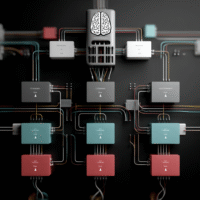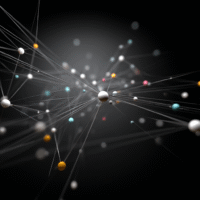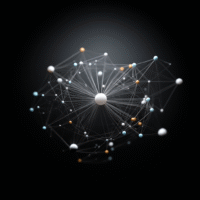AI Tech News
-
If You See Life as a Game, You Better Know How to Play It
Game Theory is a mathematical field that can assist in everyday decision-making by modeling interactions and outcomes between agents. It can predict behaviors and identify strategies when outcomes depend on others’ choices, like choosing dinner with friends or purchasing a protection plan. Understanding Game Theory concepts like Nash Equilibrium can apply to scenarios from alien […] ➡️➡️➡️
-
Regularisation Techniques: Neural Networks 101
To prevent overfitting in neural networks, regularize by applying L1 (Lasso) and L2 (Ridge) penalties to loss functions, using early stopping based on validation set performance, implementing dropout, simplifying the architecture, gathering more data, and augmenting datasets. Key methods recommended are early stopping and dropout. ➡️➡️➡️
-
Level Up Your Data Storytelling with Animated Bar Charts in Plotly
Plotly enables creating animated plots, adding dynamism to the visuals, and capturing audience attention. By reshaping data to create animation frames, one can emphasize key aspects and build anticipation. Though Plotly lacks direct animation export, workarounds like screen-capture GIFs are possible. Enhanced animated plots can significantly improve the presentation’s impact. ➡️➡️➡️
-
Researchers at UC Berkeley Introduced RLIF: A Reinforcement Learning Method that Learns from Interventions in a Setting that Closely Resembles Interactive Imitation Learning
UC Berkeley researchers have developed RLIF, a reinforcement learning method that integrates user interventions as rewards. It outperforms other models, notably with suboptimal experts, in high-dimensional and real-world tasks. RLIF’s theoretical analysis addresses the suboptimality gap and sample complexity, offering a practical alternative in learning-based control without assuming optimal human expertise. Future work will focus […] ➡️➡️➡️
-
Achieving Greater Self-Consistency in Large Language Models
Large Language Models (LLMs) must judge textual qualities consistently for reliability. Inconsistency in evaluations leads to untrustworthy results. Universal Self-Consistency (USC) improves LLM consistency across diverse tasks. Integrating external knowledge increases reasoning accuracy. Seeded sampling aids determinism, enhancing reliability. Contrastive-consistent ranking (CCR) ensures logical consistency in model rankings. A retrieval-augmented generation system (RAG) paired with […] ➡️➡️➡️
-
dbt Core, Snowflake, and GitHub Actions: pet project for Data Engineers
This pet project for Data/Analytics Engineers involves using dbt Core, Snowflake, Fivetran, and GitHub Actions to build an end-to-end data lifecycle from Google Calendar to Snowflake Dashboard. It includes steps for data extraction, transformation, storage, and visualization, offering a practical experience with modern data stack tools. ➡️➡️➡️
-
Generative AI function GENERATE_TEXT in BigQuery
BigQuery’s GENERATE_TEXT function enables SQL-oriented data professionals to conduct NLP tasks like sentiment analysis and entity extraction in BigQuery. It uses Vertex AI’s LLM and requires knowledge of SQL and prompt structuring. The function supports various tasks and accommodates varied responses through parameters like temperature, max_output_tokens, top_k, and top_p. The post includes a hands-on guide […] ➡️➡️➡️
-
Please Use Streaming Workload to Benchmark Vector Databases
Static workload benchmarks are insufficient for evaluating ANN indexes in vector databases because they focus only on recall and query performance, overlooking crucial aspects like indexing performance and memory usage. The author advocates for streaming workload benchmarks, showcasing new insights into recall stability and performance by comparing HNSWLIB and DiskANN under a streaming workload. The […] ➡️➡️➡️
-
A Requiem for the Transformer?
The article discusses whether the Transformer, a dominant AI model, will continue to lead or be replaced. Transformers are effective in various AI subdomains but face challenges like computational costs and data volume requirements. Industry bureaucracy slows down innovation while open-source rapidly progresses. The transformer’s dominance may be challenged by new models capable of in-context […] ➡️➡️➡️
-
Adaptive Weight Decay
The proposed adaptive weight decay method automatically adjusts the weight decay hyper-parameter during training to improve adversarial robustness and counter robust overfitting, without needing extra data, by dynamically basing it on classification and regularization loss gradients. ➡️➡️➡️
-
KAIST Researchers Introduce Quatro++: A Robust Global Registration Framework Exploiting Ground Segmentation for Loop Closing in LiDAR SLAM
Researchers from KAIST developed Quatro++, which improves LiDAR SLAM by tackling sparsity and degeneracy through ground segmentation. It achieves better loop closing, precise mappings, and outperforms learning-based methods. Quatro++ enhances robust registration for ground vehicles and shows high success on the KITTI dataset, making it highly effective and versatile for both LiDAR and INS systems. ➡️➡️➡️
-
This AI Research Presents a Physics-Based Deep Learning for Predicting IFP and Liposome Accumulation
Researchers introduced a Physics-informed deep learning model to predict intratumoral fluid pressure and liposome accumulation, enhancing cancer treatment strategies. The model aims for accurate drug distribution insights, addressing inconsistencies in existing nanotherapeutic approaches and improving personalized therapy design. This marks a significant advancement in understanding tumor dynamics. ➡️➡️➡️
-
4M: Massively Multimodal Masked Modeling
This paper introduces a versatile multimodal training scheme named 4M, which uses a unified Transformer encoder-decoder to handle various input/output modalities such as text, images, and semantic data, aiming to achieve a broad functionality similar to large language models in computer vision. ➡️➡️➡️
-
Neural Information Processing Systems (NeurIPS) 2023
Apple is sponsoring the in-person NeurIPS conference in New Orleans from December 10-16, fostering research exchange on neural information processing in various disciplines. The summary doesn’t include Apple’s specific workshop and event schedules. ➡️➡️➡️
-
Boosting developer productivity: How Deloitte uses Amazon SageMaker Canvas for no-code/low-code machine learning
AWS’s suite of low-code and no-code ML tools, such as Amazon SageMaker Canvas, enables rapid, cost-effective machine learning model development without requiring coding expertise. Deloitte uses these tools to expedite project delivery and take on more clients, increasing accessibility and standardization while reducing time and costs, resulting in roughly 30-40% productivity gains in ML development […] ➡️➡️➡️
-
Driving Product Impact with Actionable Analyses
As an analyst, to make impactful product changes, follow best practices and insights shared in the detailed guide available on the “Towards Data Science” platform. ➡️➡️➡️
-
FLEEK: Factual Error Detection and Correction with Evidence Retrieved from External Knowledge
Large language models often produce unreliable responses due to their factually incorrect claims and hallucinations, similar to human error. The paper introduces FLEEK, an automated tool designed to verify and correct factual inaccuracies, providing a solution to the cumbersome and time-consuming manual fact-checking process. ➡️➡️➡️
-
TiC-CLIP: Continual Training of CLIP Models
This paper introduces a benchmark for continual large-scale training of CLIP models on time-varying data without distinct task separation, addressing the challenges of training with daily-generated Petabytes of data. Accepted at NeurIPS 2023 workshop on Distribution Shifts. ➡️➡️➡️
-
GPT — Intuitively and Exhaustively Explained
The text introduces an exploration of OpenAI’s GPT architecture, with further details available on the Towards Data Science platform. ➡️➡️➡️
-
Scientists use A.I.-generated images to map visual functions in the brain
Researchers used AI to select and generate images, serving as tools to study the brain’s visual processing. This aims to enhance our understanding of vision organization and reduce biases from limited researcher-chosen images. ➡️➡️➡️

















